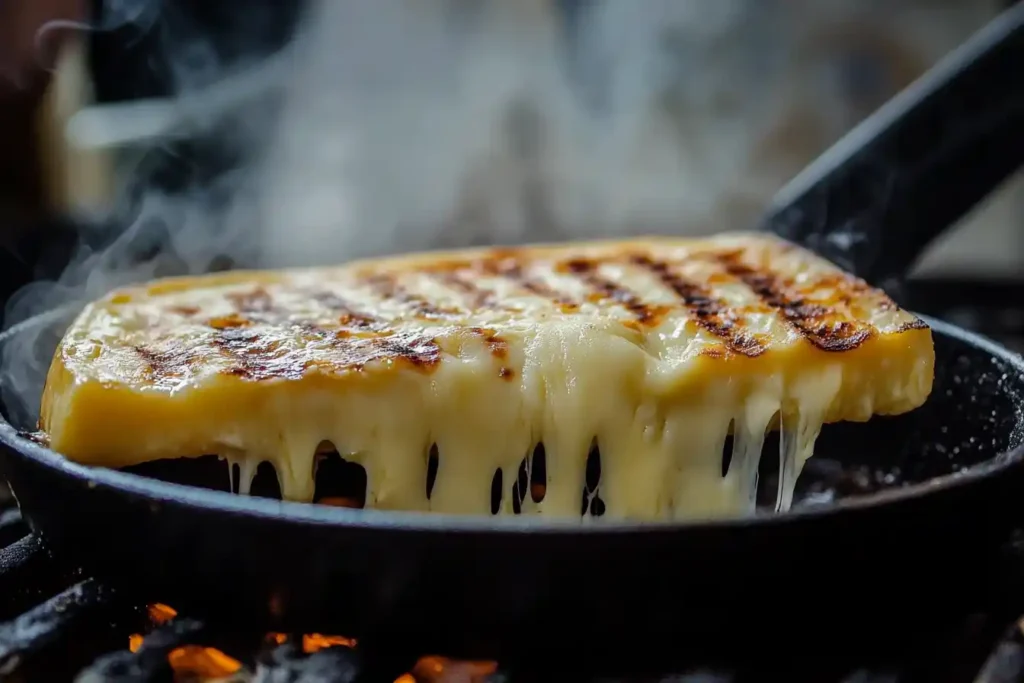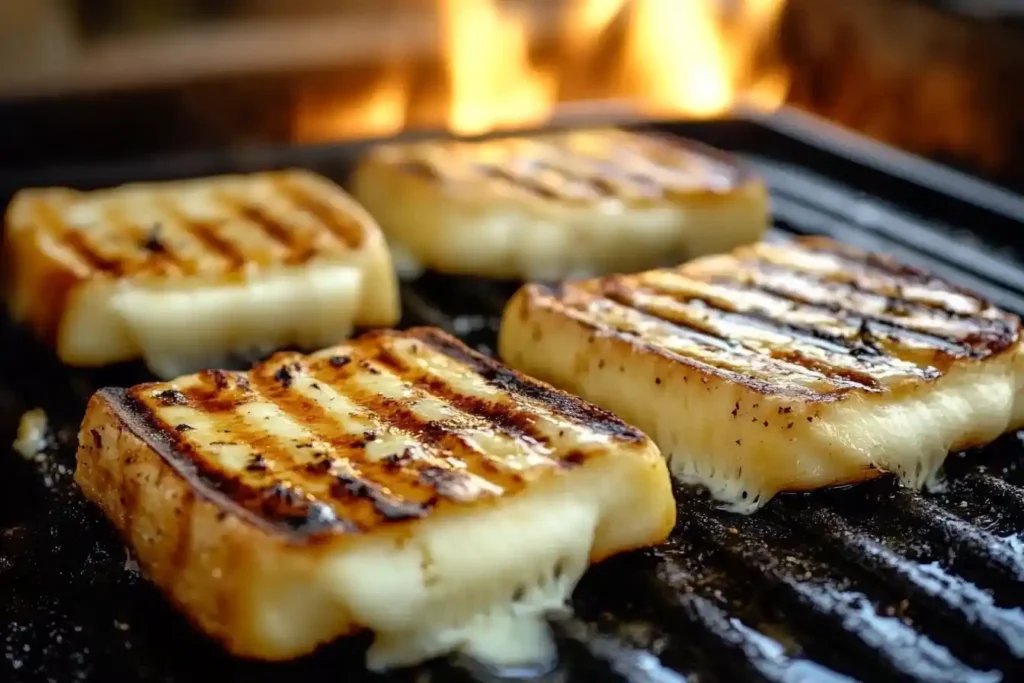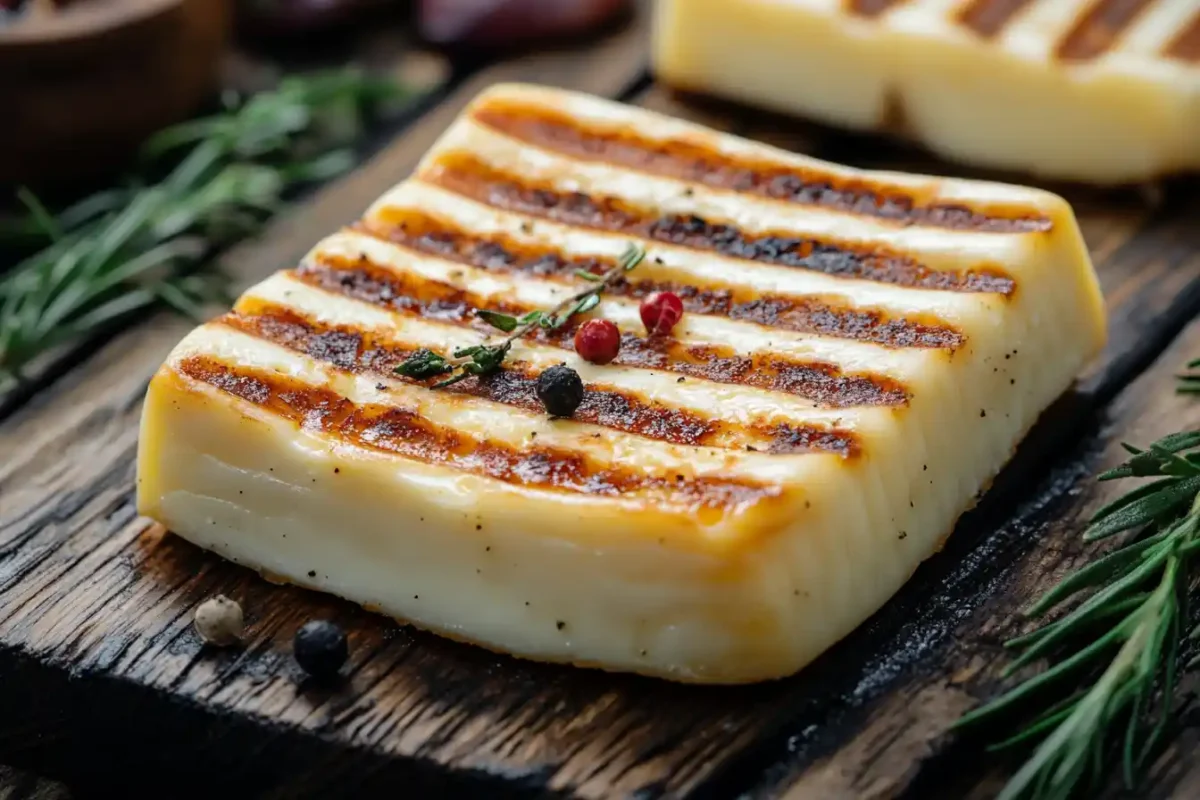Discover the art of grilling cheese with our comprehensive guide, featuring expert tips, techniques, and mouth-watering recipes.
Introduction to Grilling Cheese
Grilling cheese is a fun culinary experience that turns simple cheese into a warm, crispy, and flavorful treat. Whether you’re an experienced grill master or just starting out, understanding the basics of grilling cheese can greatly improve your cooking. This guide covers everything you need to know about grilling cheese, from choosing the right types to mastering grilling techniques and enjoying tasty recipes. If you’re wondering which cheese works best, check out our What Cheese Can Be Grilled Without Melting? guide for expert tips. Additionally, we offer tips to avoid common mistakes, ensuring your grilled cheese dishes are always perfect.
Table of Contents
- What is Grilling Cheese?
- Definition and Overview
- History of Grilled Cheese
- Choosing the Right Cheese for Grilling
- Best Cheeses for Grilling
- Cheeses to Avoid
- Comparing Grilling Cheese and Halloumi
- Essential Tools and Equipment
- Types of Grills Suitable for Cheese
- Necessary Accessories
- Preparation Techniques
- Slicing and Preparing Cheese
- Marinating and Seasoning Tips
- Grilling Methods
- Direct vs. Indirect Grilling
- Temperature Control
- Preventing Cheese from Melting Excessively
- Delicious Grilled Cheese Recipes
- Classic Grilled Cheese Sandwich
- Grilled Cheese with Vegetables
- Gourmet Grilled Cheese Variations
- Sweet Grilled Cheese Options
- Serving Suggestions and Pairings
- Side Dishes
- Beverages that Complement Grilled Cheese
- Health Benefits and Nutritional Information
- Nutritional Value of Grilled Cheese
- Healthier Grilling Options
- Common Mistakes to Avoid
- Overcooking and Undercooking
- Selecting the Wrong Cheese
- FAQs about Grilling Cheese
- Conclusion
What is Grilling Cheese?
Grilling cheese involves cooking cheese over a heat source, typically a grill, to achieve a melted, crispy exterior and a gooey interior. This method not only enhances the cheese’s flavor and texture but also makes it a versatile ingredient in various dishes. Consequently, grilling cheese can be used in everything from sandwiches to standalone appetizers.
Definition and Overview
Grilling cheese is not limited to sandwiches. It encompasses a range of preparations, including skewers, flatbreads, and standalone cheese items like Halloumi. Essentially, the process requires precise heat management to prevent the cheese from becoming too runny while achieving a desirable char. Additionally, understanding the properties of different cheeses ensures successful grilling outcomes.
History of Grilled Cheese
The concept of melting cheese over heat dates back centuries, with many cultures incorporating grilled or melted cheese into their cuisines. For instance, ancient Romans enjoyed cheese melted over open flames. However, the modern grilled cheese sandwich became especially popular in the United States during the Great Depression, providing a simple and affordable meal option. Over time, it has evolved into a beloved comfort food with countless variations.
Choosing the Right Cheese for Grilling Cheese
Choosing the right cheese is key to successful Barbecuing. Different cheeses react differently to high heat, which impacts their texture and flavor. By understanding which cheeses work best for grilling, you can improve your cooking and achieve better results
Best Cheeses for Grilling
- Halloumi: Known for its high melting point, Halloumi is ideal for Barbecuing without losing shape. Its firm texture ensures it holds up well on the grill, making it a favorite for many.
- Cheddar: Offers a sharp flavor and melts well, making it perfect for sandwiches. Moreover, aged Cheddar provides a robust taste that enhances grilled dishes.
- Mozzarella: Provides a stretchy texture, excellent for dishes like pizza and paninis. Additionally, fresh Mozzarella adds a creamy element to grilled recipes.
- Provolone: Mild and creamy, suitable for a variety of grilled cheese recipes. Consequently, Provolone blends well with other ingredients, offering versatility.
- Gouda: Rich and buttery, melts smoothly for gourmet grilled cheese options. Its unique flavor profile adds depth to any grilled cheese dish.
Cheeses to Avoid
- Ricotta: Too soft and creamy, lacks the structure needed for Barbecuing. As a result, it tends to spread and lose shape on the grill.
- Brie: Melts too quickly, making it difficult to handle on the grill. Therefore, Brie is best enjoyed fresh rather than grilled.
- Feta: Crumbly texture doesn’t hold well when grilled. Additionally, its strong flavor can overpower other ingredients in grilled dishes.
Comparing Grilling Cheese and Halloumi
While Halloumi is a popular choice for Barbecuing cheese, it’s important to understand its special qualities. Its semi-hard texture and high melting point make it different from other Barbecuing cheeses. Though some Barbecuing cheeses have similar traits, not all are Halloumi. In fact, Barbecuing cheese is a larger group that includes different types, each with its own taste and feel.
Essential Tools and Equipment
Having the right tools can make Barbecuing cheese a seamless experience. From the type of grill to necessary accessories, preparation is key. Consequently, investing in quality equipment ensures better results and a more enjoyable grilling process.
Types of Grills Suitable for Cheese
- Gas Grills: Offer precise temperature control, ideal for evenly grilling cheese. Moreover, gas grills heat up quickly, allowing for efficient cooking.
- Charcoal Grills: Provide a smoky flavor but require careful heat management. Additionally, charcoal grills can impart a unique taste to grilled cheese dishes.
- Electric Grills: Convenient for indoor grilling, though they may have size limitations. However, they are excellent for those who prefer a hassle-free grilling experience without the need for charcoal or gas.
Necessary Accessories
- Grill Pan or Grate Mats: Prevent cheese from sticking and ensure even cooking. These accessories are particularly useful for smaller cheese pieces.
- Spatula: Essential for flipping and handling cheese without breaking. A good spatula allows for smooth maneuvering of delicate cheese items.
- Thermometer: Helps monitor grill temperature for optimal results. Accurate temperature control is crucial to prevent overcooking or undercooking the cheese.
Preparation Techniques
Proper preparation enhances the grilling process, ensuring the cheese cooks evenly and retains its desired texture. Therefore, taking the time to prepare your cheese correctly can significantly improve the final dish.
Slicing and Preparing Cheese
- Thickness: Slice cheese uniformly to ensure even grilling. Thicker slices retain structure, while thinner slices melt quickly. Additionally, uniform slices help achieve consistent cooking results.
- Shape: Square or rectangular slices are easier to handle on the grill. Moreover, maintaining a consistent shape allows for better presentation.
- Prepping: Pat cheese dry to remove excess moisture, preventing steam and uneven cooking. Consequently, dry cheese slices grill more effectively, achieving the desired crispy exterior.
Marinating and Seasoning Tips
- Marinating: Marinate cheeses like Halloumi with olive oil, herbs, and spices to infuse flavor before grilling. This step enhances the cheese’s taste and adds a layer of complexity to the dish.
- Seasoning: Lightly season with salt, pepper, or your favorite spices to enhance taste without overpowering the cheese’s natural flavors. Additionally, seasoning can complement other ingredients in your grilled cheese recipes.
Grilling Methods
Mastering different grilling methods can help you achieve the perfect grilling cheese every time. Therefore, understanding the various techniques ensures versatility in your cooking.
Direct vs. Indirect Grilling
- Direct Grilling: Places cheese directly over the heat source, ideal for quick grilling and achieving a crispy exterior. This method is best for smaller or thinner cheese pieces that require minimal cooking time.
- Indirect Grilling: Cooks cheese away from the direct heat, suitable for larger or thicker cheese pieces that require longer cooking times. Consequently, indirect grilling helps prevent the cheese from burning while ensuring it melts evenly.
Temperature Control
Maintaining the right temperature is crucial. Generally, medium-high heat (350-400°F) is ideal for grilling cheese. However, you should adjust based on the cheese type and desired outcome. For example, softer cheeses may require lower temperatures to prevent excessive melting, whereas firmer cheeses can handle higher heat.
Preventing Cheese from Melting Excessively
- Use a Grill Pan: Provides a barrier between cheese and direct heat. This method helps maintain the cheese’s shape while allowing it to melt evenly.
- Monitor Closely: Keep a close eye on the cheese to prevent over-melting. Frequent checks ensure that the cheese reaches the perfect consistency without becoming too runny.
- Chill Before Grilling: Slightly chilled cheese holds its shape better when placed on the grill. Additionally, starting with cold cheese can help control the melting process more effectively.

Delicious Grilled Cheese Recipes
Explore a variety of grilling cheese recipes that cater to different tastes and occasions. Whether you’re craving a classic sandwich or a gourmet creation, these recipes offer something for everyone.
Classic Grilled Cheese Sandwich
A timeless favorite, the classic grilled cheese sandwich is simple yet satisfying. Furthermore, its versatility allows for numerous variations based on personal preferences.
Ingredients:
- Sliced Cheddar cheese
- Bread slices
- Butter
Instructions:
- Butter the bread slices on one side.
- Place cheese between unbuttered sides.
- Grill until golden brown and cheese is melted.
Grilled Cheese with Vegetables
Add a nutritious twist to your grilled cheese by including vegetables. This variation not only boosts the flavor but also enhances the dish’s nutritional value.
Ingredients:
- Sliced Mozzarella cheese
- Whole grain bread
- Sliced tomatoes
- Spinach leaves
- Olive oil
Instructions:
- Drizzle olive oil on bread slices.
- Layer cheese, tomatoes, and spinach.
- Grill until cheese is bubbly and bread is crispy.
Gourmet Grilled Cheese Variations
Elevate your grilled cheese by incorporating gourmet ingredients for a more refined flavor. These variations are perfect for impressing guests or enjoying a luxurious meal at home.
Ingredients:
- Sliced Gouda cheese
- Brioche bread
- Caramelized onions
- Prosciutto
- Fig jam
Instructions:
- Spread fig jam on one bread slice.
- Layer Gouda, caramelized onions, and prosciutto.
- Grill until cheese is melted and bread is golden.
Sweet Grilled Cheese Options
For those with a sweet tooth, sweet grilled cheese provides a delightful twist on the traditional savory version. These recipes blend the richness of cheese with sweet ingredients, creating a unique and tasty treat.
Ingredients:
- Cream cheese
- Sliced apples or pears
- Honey
- Cinnamon
- Bread slices
Instructions:
- Spread cream cheese on one side of each bread slice.
- Layer sliced apples or pears on top of the cream cheese.
- Drizzle honey and sprinkle cinnamon.
- Grill until the bread is golden and the cheese is slightly melted.
Serving Suggestions and Pairings
Enhance your grilled cheese by pairing it with the right side dishes and drinks. These carefully chosen pairings not only complement the flavors of the grilled cheese but also help create a balanced and satisfying meal.
Side Dishes
- Tomato Soup: A classic pairing that complements the richness of grilled cheese. Additionally, the acidity of the soup balances the savory cheese flavors.
- Salads: Fresh greens add a light contrast to the savory cheese. Moreover, salads can incorporate various vegetables and dressings to suit different tastes.
- Pickles: Provide a tangy crunch that balances the melted cheese. Consequently, pickles add texture and a burst of flavor to each bite.
Beverages that Complement Grilled Cheese
- Tomato Juice: A hearty choice that mirrors the comfort of grilled cheese. Additionally, it can be spiced up with herbs for added flavor.
- Craft Beers: Light ales or IPAs pair well with the savory flavors. Furthermore, the carbonation in beer helps cleanse the palate between bites.
- Sparkling Water: Offers a refreshing balance without overpowering the taste. Moreover, flavored sparkling waters can add a subtle sweetness to the meal.

Health Benefits and Nutritional Information
While grilled cheese is often seen as indulgent, it can offer nutritional benefits when prepared thoughtfully. By making mindful ingredient choices, you can create healthier grilled cheese options without sacrificing flavor.
Nutritional Value of Grilled Cheese
Cheese is a good source of calcium, protein, and essential vitamins. As a result, adding cheese to your diet can support bone health and muscle function. When paired with whole grain bread and vegetables, grilled cheese becomes a balanced meal, providing fiber, vitamins, and minerals
Healthier Grilling Options
- Use Whole Grain Bread: Increases fiber content and adds a nutty flavor. Additionally, whole grain bread offers more nutrients compared to white bread.
- Add Vegetables: Boosts vitamins and minerals, enhancing the meal’s nutritional profile. Moreover, vegetables add texture and color, making the dish more appealing.
- Opt for Lower-Fat Cheeses: Reduces calorie intake while maintaining flavor. Consequently, choosing cheeses like part-skim mozzarella can make your grilled cheese healthier.
Common Mistakes to Avoid
Avoid these common mistakes to make sure your grilled cheese turns out perfectly every time. By spotting these errors, you can improve your grilling skills and, in turn, enjoy consistently delicious results.
Overcooking and Undercooking
- Overcooking: Leads to burnt bread and overly melted cheese, making the sandwich messy. Therefore, it’s essential to monitor the grilling process closely.
- Undercooking: Results in cheese that hasn’t fully melted, compromising texture and flavor. Additionally, undercooked cheese may not provide the desired gooey consistency.
Selecting the Wrong Cheese
Choosing a cheese that doesn’t hold up to grilling can easily ruin the dish. Therefore, always select cheeses that are known for their grilling properties to ensure a successful result. Moreover, experimenting with different cheeses can help you discover new favorite combinations.
FAQs about Grilling Cheese
What cheese is grilling cheese?
Grilling cheese refers to cheeses that are suitable for grilling, such as Halloumi, Cheddar, Mozzarella, Provolone, and Gouda. These cheeses have properties that allow them to hold their shape and melt appropriately when grilled. Additionally, they offer a variety of flavors to suit different tastes.
Are grilling cheese and Halloumi the same thing?
While Halloumi is a popular grilling cheese due to its high melting point and firm texture, not all grilling cheeses are Halloumi. Grilling cheese is a broader category that includes various types of cheese suitable for grilling. Consequently, Halloumi is just one example among many options available for grilling.
Why is it called grilling cheese?
It’s called grilling cheese because it refers to the practice of grilling cheese over a heat source. This method enhances the cheese’s flavor and texture, making it a versatile ingredient in various grilled dishes. Additionally, grilling cheese imparts a smoky flavor that complements its natural richness.
What cheese can be grilled without melting?
Cheeses like Halloumi and Paneer can be grilled without melting excessively. Thanks to their high melting points, they retain their shape, making them ideal choices for grilling. Additionally, these cheeses can be marinated or seasoned beforehand, further enhancing their flavor before grilling
Conclusion
Mastering the art of grilling cheese opens up a world of culinary possibilities. To begin with, by selecting the right cheese, using proper grilling techniques, and experimenting with diverse recipes, you can create delicious and satisfying dishes that will delight the palate. Moreover, exploring new combinations and techniques can further enhance your grilling experience.

